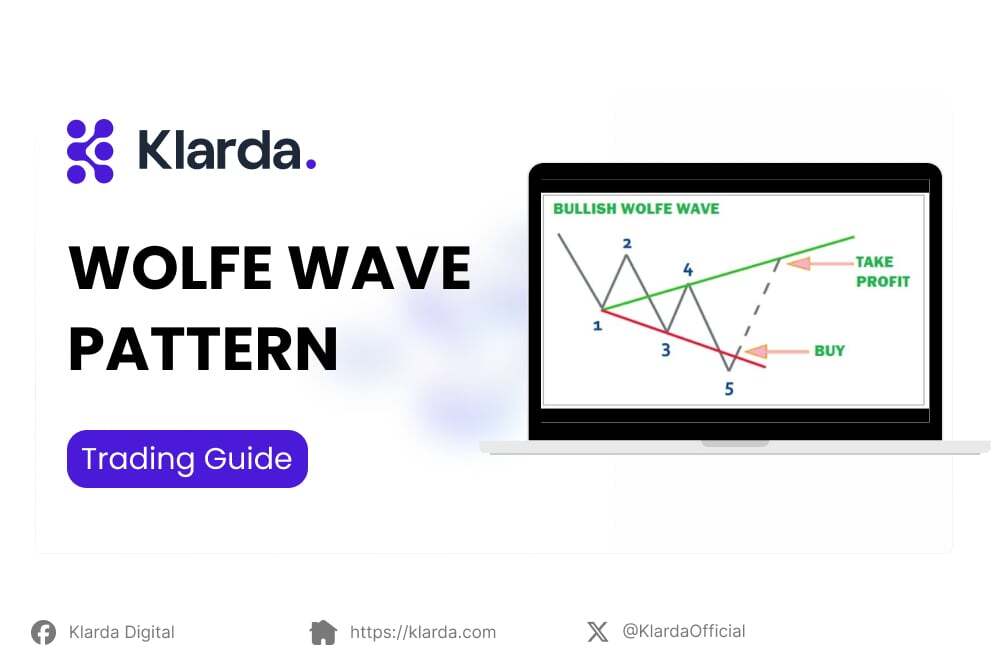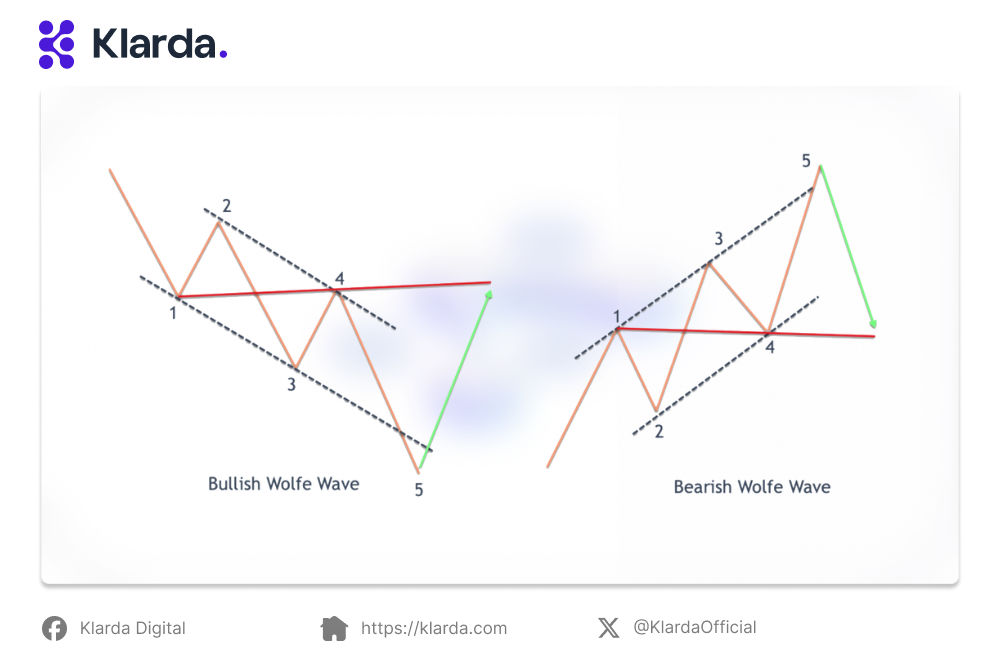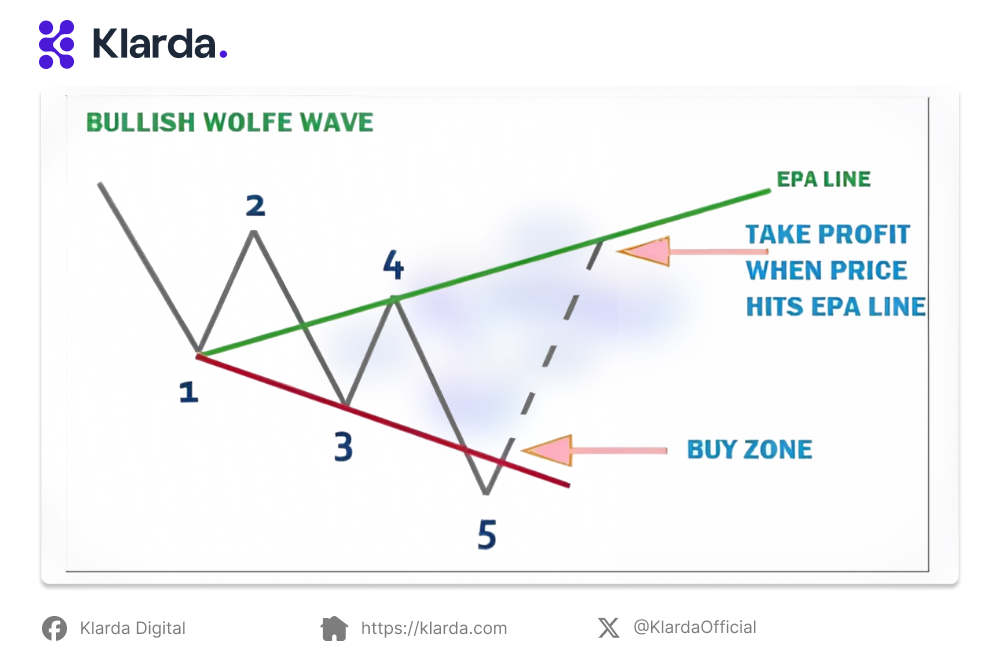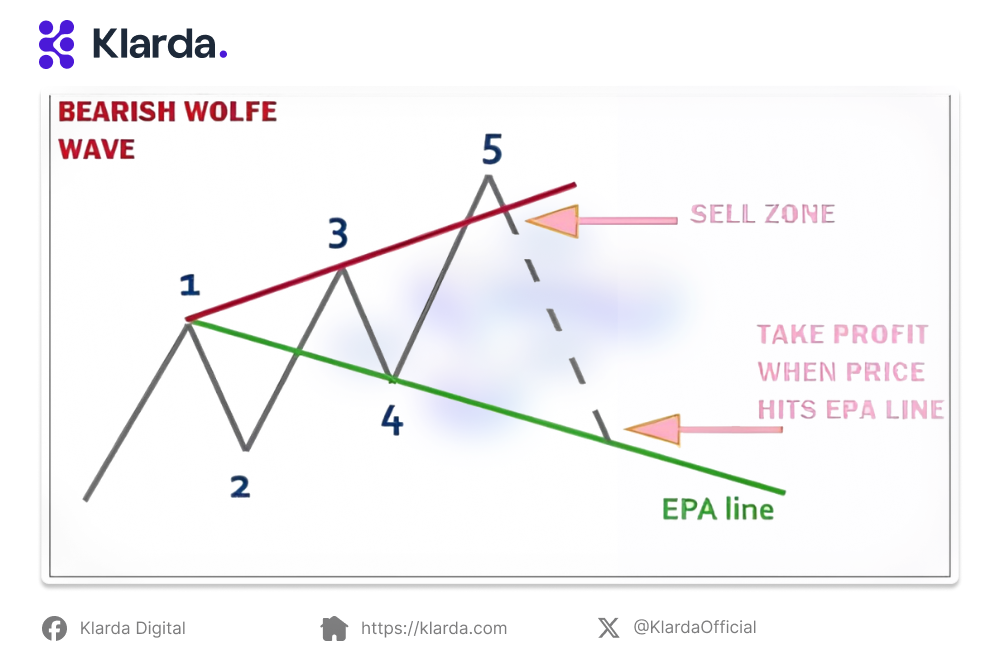Wolfe Wave Candlestick Pattern
Discover the Wolfe Wave pattern, a potent tool in technical analysis for predicting price reversals. Learn the rules and tips for effective trading.
The Wolfe Wave pattern is a powerful and lesser-known technical analysis tool that can provide traders with high-probability setups when correctly identified. This pattern helps in forecasting price reversals and potential market turning points, making it a valuable asset in any trader’s toolkit. In this article, we will explore what the Wolfe Wave pattern is, the fundamental rules of Wolfe Wave theory, how it differs from traditional price trend channels, and strategies for trading effectively with this pattern.

KEY TAKEAWAYS:
- Wolfe Wave Pattern: A technical analysis tool that helps predict market reversals and potential turning points.
- Wolfe Wave Theory Rules: Key principles for correctly identifying and trading Wolfe Waves, crucial for effective use of the pattern.
- Difference from Price Trend Channels: Understanding the distinct characteristics of Wolfe Waves compared to traditional price trend channels.
- Effective Trading Strategies: Tips and techniques for successfully trading with the Wolfe Wave pattern, maximizing profitability.
WHAT IS THE WOLFE WAVE PATTERN ?
Wolfe Waves is a distinctive chart pattern in financial trading, also known by various names such as the Wolfe Wave Pattern or Wolf Waves Model. By mastering Wolfe Waves, traders can identify potential profit opportunities in the market.
The Wolfe Waves trading strategy is used by market analyst and veteran trader Linda Raschke. Wolfe Waves is a tradeable price pattern applicable to all currency pairs. The foundation of this strategy is based on Elliott Wave Theory and the fundamental issue of supply and demand imbalances in the market. It can be understood that it views all market movements, psychological states, and trading activities that exceed their limits as eventually reverting to a state of "balance."
Wolfe Waves can appear across all TimeFrames, from 5 minutes to 1 week, and unlike other price patterns, Wolfe Waves can also predict the "timing" of price movements.
Typically, Wolfe Waves are observed in:
- Channels during an uptrend (looking for bearish Wolfe Waves)
- Channels during a downtrend (looking for bullish Wolfe Waves)
- And even in sideways price channels during consolidation

RULES OF WOLFE WAVE THEORY
The rules of Wolfe Waves are based on the following symmetrical pattern:
- Wave 3 and Wave 4 must be within the price channel of Wave 1 and Wave 2.
- Wave 1 and Wave 2 should be equal to Wave 3 and Wave 4, creating a perfect symmetrical pattern.
- Wave 5 breaks the trendline created by Wave 1 and Wave 3. Wave 5 serves as the signal to enter a trade.
Exit the trade at the trendline connecting the reversal points of Wave 1 and Wave 4.
DIFFERENCE BETWEEN WOLFE WAVES AND PRICE TREND CHANNEL
The difference between a price trend channel and the Wolfe Waves pattern is the line used to estimate the profit-taking zone, known as the EPA line. If you’re unfamiliar with the EPA line, you'll learn more about it in the content below.
- EPA stands for Estimate Price at Arrival, which indicates where the currency pair is expected to reach in the future. However, it’s important to note that if the EPA line is too steep, the price is less likely to reach it.
- ETA stands for Estimated Time of Arrival, which is commonly used to predict when the price will touch the ETA line based on the convergence points of channels 1-3 and 2-4.
However, you don’t need to focus too much on the ETA line; instead, the EPA line will help you determine the profit-taking point for this trading technique.
Regardless of whether the Wolfe Wave is bullish or bearish, the EPA line for Wolfe Waves is always drawn by connecting points 1 and 4 in the Wolfe Waves pattern.
HOW TO TRADE EFFECTIVELY WITH WOLFE WAVE PATTERN
Typically, the most challenging aspect for traders when applying the Wolfe Waves trading technique is determining whether the Wolfe Wave pattern is bullish or bearish. However, if you are familiar with the characteristics of a Wolfe Wave, recognizing it will not be difficult.
Once you have identified the Wolfe Wave forming on the chart, you can proceed with trading using the following method:
Trading Method with Bullish Wolfe Waves
When you see a bullish Wolfe Wave pattern forming, wait until the price reaches point 5. You can use additional reversal candlestick patterns (or other technical indicators) as a signal to enter a BUY trade (for example, bullish reversal candlestick patterns, price breaking trends or resistance according to Dow Theory on a smaller timeframe, or trading at support levels established on a larger timeframe…).
Monitor the price movement and take profit as soon as the price reaches the EPA line.

Trading Method with Bearish Wolfe Waves
When the price reaches point 5, combine this with the appearance of a bearish reversal candlestick pattern (or other technical indicators) to confirm the signal and enter a SELL trade (for example, bearish reversal candlestick patterns, price breaking a trend or support according to Dow Theory on a smaller timeframe, or trading at resistance levels established on a larger timeframe…).
The EPA line is a future-extended line, so you cannot set a profit target in advance. Therefore, you will need to monitor regularly and continuously so that as soon as the price touches the EPA line, you can take profit and exit the trade.

Klarda App is your ultimate companion for mastering advanced trading strategies like the Wolfe Wave pattern. Designed for traders who seek to gain an edge in the market, Klarda offers powerful tools and insights that help you identify high-probability setups and make informed decisions. With Klarda, you can easily analyze complex patterns, including Wolfe Waves, and apply proven techniques to forecast market reversals with precision. Whether you’re a seasoned trader or just starting out, Klarda equips you with the knowledge and resources to navigate market trends confidently and effectively.

Conclusion:
Understanding and applying the Wolfe Wave pattern can give traders a significant edge in the market, allowing them to anticipate and capitalize on key price reversals. While this pattern requires careful analysis and precise timing, mastering it can lead to consistent and profitable trades. By integrating the Wolfe Wave pattern into your trading strategy, you can enhance your ability to make informed decisions and navigate the complexities of market trends with greater confidence.
Updated 8 months ago